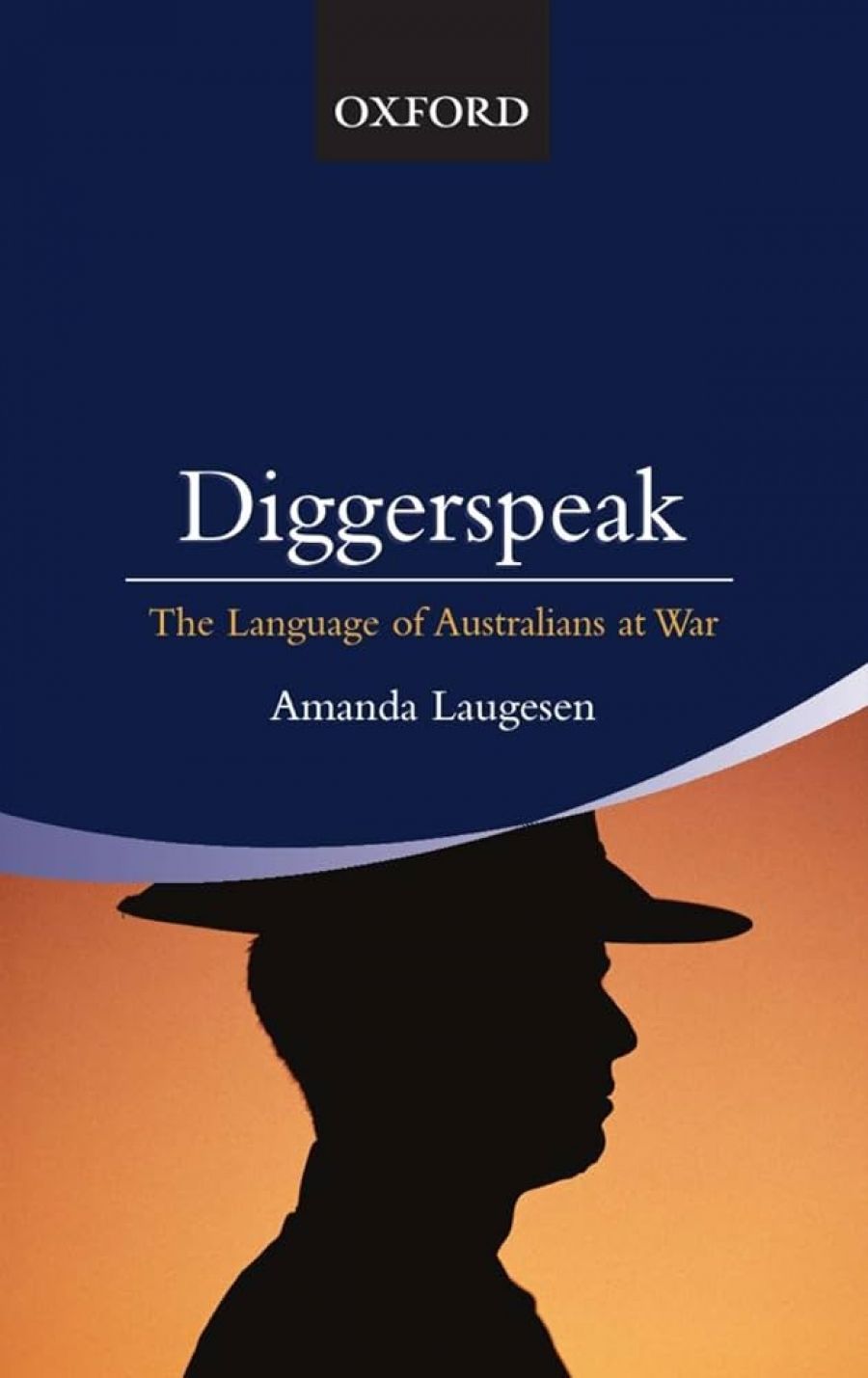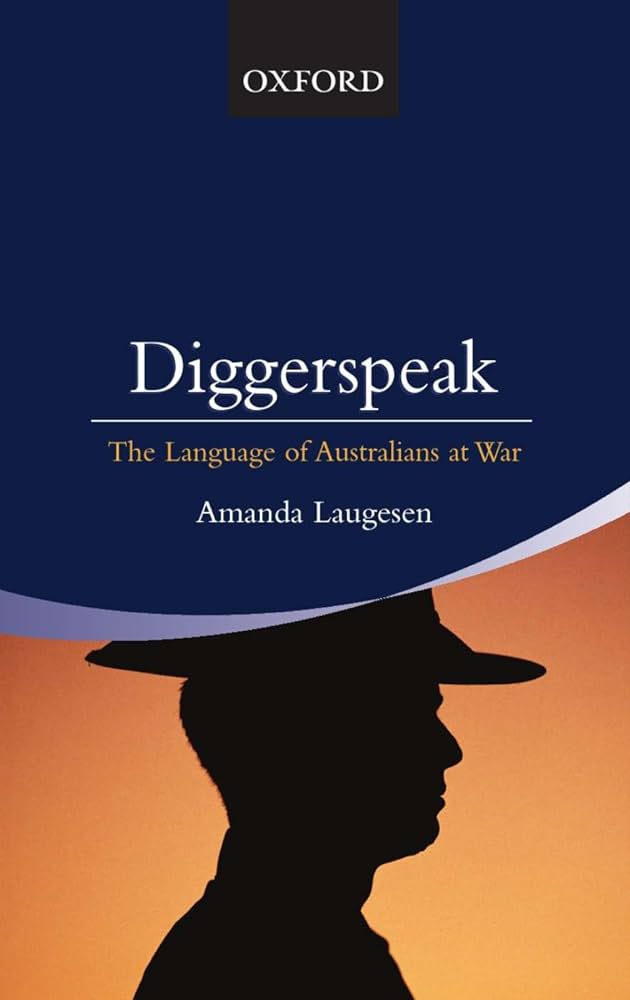
- Free Article: No
- Contents Category: Language
- Review Article: Yes
- Article Title: War lingo
- Online Only: No
- Custom Highlight Text:
While I was reading this book, news came that Peter Casserly, the last surviving digger who fought on the Western Front in World War I, had died, aged 107. Like Marcel Caux, who died in 2004, aged 105, Casserly always repudiated the Australian glorification of Gallipoli, refusing to participate in Anzac Day marches, join the RSL or even to talk about his wartime experiences. Yet after eighty-seven years of silence on the subject, Casserly had not forgotten the language that diggers used in 1917. The Sydney Morning Herald report of his death quoted from an interview he gave. ‘Another time Fritz derailed a train with English soldiers on board,’ he recollected, adding that, ‘Jerry was always trying to blow up the train with all its ammo.’ The soldiers’ terms to refer to their enemy, the Germans (or ‘the Hun’, as it pleased supporters of the conflict to say then), were Fritz, the pet-form of the common German given name Friedrich, and Jerry, an English pet-name that echoed the word German. Likewise, the Turks were called Abdul and Johnny Turk.
- Book 1 Title: Diggerspeak
- Book 1 Subtitle: The language of Australians at war
- Book 1 Biblio: OUP, $34.95 pb, 206 pp
- Book 1 Cover Small (400 x 600):

- Book 1 Cover (800 x 1200):

Soldiers generate language of their own: the strictly military, names for guns, ammunition, and other equipment; and slang for things that matter to them, positively (booze, sex) or negatively (superior officers, base-wallahs, the enemy). Australian soldiers – diggers, as they began to call themselves in World War I – have been no different, and Diggerspeak is an account in dictionary form of the lexis of the wars that Australia participated in, from the Boer through the two worlds wars, Korea, Malaya and Vietnam.
Laugesen defines the words and phrases included, discusses their usage and origin if that is known, and provides citations to illustrate them. A good deal of the text is citations, which are generally more expansive than is usual in historical dictionaries. They take one into the mind and the world of the serving or reminiscing soldier. It is not all horror, annoyance, discomfort, and deprivation, and can be amusing and lead the reader into forgotten or unknown byways of soldiering.
I was, for instance, unaware that for comfort and convenience the Anzacs at Gallipoli frequently went naked in the trenches, a practice that the Turks noted and interpreted in their own way: ‘A Turkish army order was captured which stated that the Australians were running short of supplies, as they made one pair of trousers do for three men. Evidently Johnny Turk could not understand the Australian disregard for conventionality and his taking to nakedness when it meant comfort and there were no women within hundreds of miles to make him conscious of indecency.’ Even the litanies of complaint can entertain: ‘I’m beginnin’ to get a ‘ump like a camel carryin’ these flamin’ boxes ... It’s bad enough to be eatin’ bully beef, but carryin’ it as well is rotten. I couldn’t look a decent bullock in the face now for what I’ve said about ‘im when ‘e’s tinned.’
Much of the vocabulary Laugesen records was, of course, of limited currency (e.g. barrak, of a camel: to sit; to make [a camel] sit – there was briefly an Imperial Camel Corps), but equally many words passed into general use. Dixie and stoush (war), survive from the Boer War. Many will be surprised to learn that terms such as cobber up, dinki-di, (come a) gutser, job (to punch), and souvenir and salvage (to misappropriate, steal) first came into use during World War I.
Laugesen’s inclusion of words like burl, chat (a louse), dinger (arse), ear-bash and greasy, about the military origins of which there are real doubts, raises a conceptual issue that I encountered when working on underworld slang. Does the fact that the earliest evidence is military (or underworld) mean that the term is actually of military (or underworld) origin? This question is particularly relevant when the earliest evidence happens to be a military (or underworld) glossary. The glossator found the word in military or underworld use, but it may have had a wider use and simply not have been other-wise recorded at the time.
There are doubts, too, about the Australianness of some of the terms Laugesen includes. Australian soldiers certainly used them, but so did British, New Zealand and other soldiers. This is particularly the case with some of the terms derived from Arabic such as bint (girl) and faloosh (money).
One minor irritation is that the citations contain a good many words that readers will be unfamiliar with (such as snob, cobbler and limber, the detachable forepart of a gun-carriage), and only rarely are they glossed. The occasional glosses show editorial awareness of the problem, but it was not systematically attended to.
The funny thing is that some of these unglossed words turn out to be military terms or military slang that deserve separate entries (if they are in fact Australian). They include arty (artillery), bivvy (tent), hoosta, variant of hooshter (camel-rider), flying pig (some kind of munition), M and Vs (initialism of meat and vegetables), onks (francs), take a bead on (aim at), waled (street-vendor) and berker (brothel, from the Cairene brothel street Sharia el Berker).
Diggerspeak is not the first dictionary of Australian military vocabulary. That honour belongs to W.H. Downing’s Digger Dialects (1919), the first dictionary of World War I lingo published anywhere. Glossaries of new World War II terms were published, and some of the now numerous memoirs of Vietnam veterans contain glossaries.
Laugesen’s book is the first to provide an overview of all the wars that Australia participated in prior to Vietnam and tracks both the emergence of new terms and the persistence of older terms in each new conflict. It is a welcome addition to the lexicography of Australian English, and to military lexicography.


Comments powered by CComment